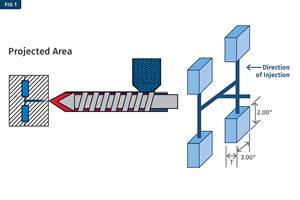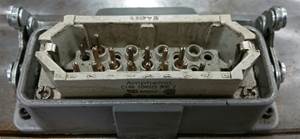‘Collaborative’ Robot Works Alongside Human Workers
The goal of Baxter's builder is to make U.S. manufacturing more globally competitive by making automation more affordable and easier to implement.
The company name says a lot about its products. is a five-year-old, Boston-based company that makes what it calls “a different kind of robot.” The device has a deliberately anthropomorphic look, with two multi-joined arms on a columnar “body,” an expressive pair of humanoid eyes, and a friendly-sounding name, Baxter. All of this might sound a bit cutesy to a no-nonsense process engineer, but Baxter is designed with a serious purpose in mind.
The goal is to make U.S. manufacturing more globally competitive by making automation more affordable and easier to implement, so that valuable employees can be freed from simple repetitive tasks and devoted to more value-added jobs. Baxter is not for high speed and precision, but for repetitive pick-and-place tasks that don’t require expensive human labor.
Baxter is designed to be implemented quickly and easily with no programming skills, to work safely beside human workers, to communicate with them in a simple and intuitive fashion, to be self-guided by means of built-in sensors, and on top of all that, to have a relatively low price point.
Safety is one of the key principles of Baxter’s design. It incorporates 360° sonar and a front-facing vision system to detect human presence and also to perform its tasks. It can “see” in 3D, sensing height and distance. With vision, it can detect objects on a conveyor, for example, and count parts as it packs them into containers. Baxter’s “servo-elastic” control prevents harmful collisions: If one of its arms meets resistance force of less than 1 lb, it will stop—and then continue on its path when the resistance is removed.
Simplicity is another key principle. Baxter is a complete system of hardware, software, controls, user interface, safety, and sensors; it needs no integration. Take it out of the box, and Baxter can be trained and working in under an hour, the company says.
Baxter “learns” tasks by lead-through teach programming: With very light pressure, a worker guides its arms through the desired motions and presses a button to actuate the grippers at the desired positions. Each arm has seven servo-driven axes. The unit is powered by 120V.
Rethink Robotics describes Baxter as a “collaborative robot.” Baxter’s “face” is a small LCD screen with two eyes depicted on it. Those eyes follow the task the robot is currently focused on. They have several different expressions intended to help workers understand Baxter’s “state of mind,” so to speak. For instance, a confused look, with raised eyebrows, signals a problem, and the eyes turn to the arm that needs attention.
The Rodon Group, a large custom and proprietary injection molder in Hatfield, Pa., is one of the first plastics companies to employ Baxter. It uses the robot to pick parts off a conveyor and pack them into a box in layers—just the sort of task Baxter was designed for. Lowell Allen, Rodon’s sr. v.p. of manufacturing, is happy with Baxter’s performance and expects to get more like him. “Conventional robots require guarding because they can be dangerous,” Allen says, “but Baxter is designed to work alongside people without need for protective guarding.” He also likes that Baxter can be taught jobs by ordinary line workers with no programming knowledge. The “collaborative” aspect is useful, too: Baxter’s semblance of a face “makes it easier for workers to accept,” Allen says.
Related Content
Is There a More Accurate Means to Calculate Tonnage?
Molders have long used the projected area of the parts and runner to guesstimate how much tonnage is required to mold a part without flash, but there’s a more precise methodology.
Read MoreHot Runners: How to Maintain Heaters, Thermocouples, and Controls
I conclude this three-part examination of real-world problems and solutions involving hot runners by focusing on heaters, thermocouples, and controls. Part 3 of 3.
Read MoreThree Key Decisions for an Optimal Ejection System
When determining the best ejection option for a tool, molders must consider the ejector’s surface area, location and style.
Read MoreA Systematic Approach to Process Development
The path to a no-baby-sitting injection molding process is paved with data and can be found by following certain steps.
Read MoreRead Next
Lead the Conversation, Change the Conversation
Coverage of single-use plastics can be both misleading and demoralizing. Here are 10 tips for changing the perception of the plastics industry at your company and in your community.
Read MoreFor PLASTICS' CEO Seaholm, NPE to Shine Light on Sustainability Successes
With advocacy, communication and sustainability as three main pillars, Seaholm leads a trade association to NPE that ‘is more active today than we have ever been.’
Read MorePeople 4.0 – How to Get Buy-In from Your Staff for Industry 4.0 Systems
Implementing a production monitoring system as the foundation of a ‘smart factory’ is about integrating people with new technology as much as it is about integrating machines and computers. Here are tips from a company that has gone through the process.
Read More













